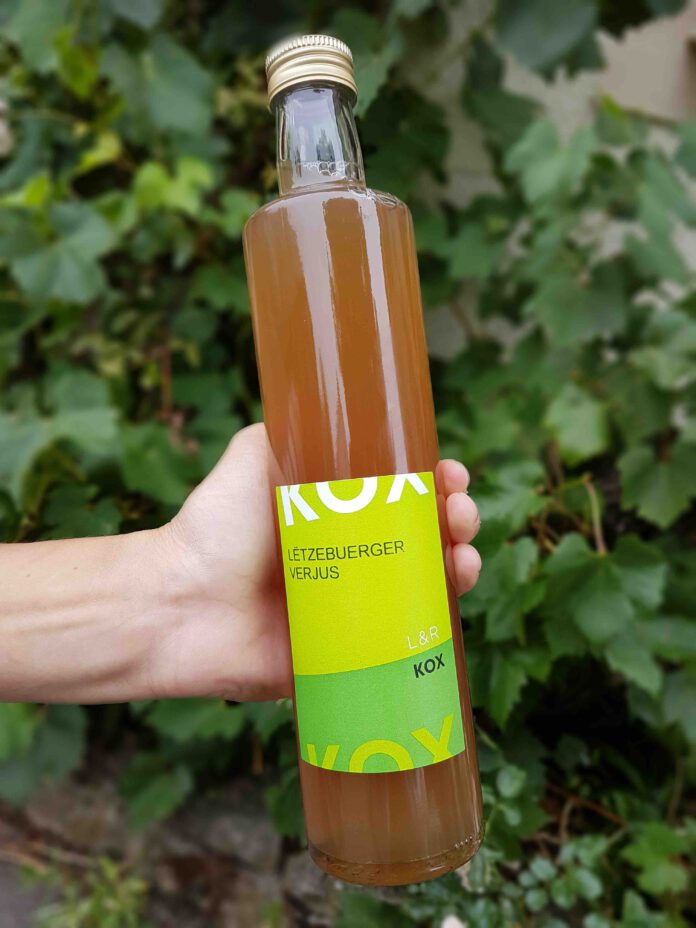On 5 August 2020, Domaine L&R Kox launched its annual grape harvest! This is the earliest start date in the Domaine’s history. However, this is not a harvest of grapes for wine production, but the first “verjus” produced in Luxembourg.
“In the vineyard everything is eaten”.
Verjus is grapes and nothing else. It is neither a vinegar nor a sweet grape juice, still less wine since it does not come from any alcoholic fermentation. The green grapes picked before they are ripe, hence its name verjus, or vert-jus, then look like green peas. Thus, on August 5, 2020, Domaine L&R Kox chose to harvest the following grape varieties: cabernet blanc, pinotin, and auxerrois. Close to the pressing method for their wines and crémants, the verjus is also extracted from the grapes by pressing. Unfiltered, the verjus can only be preserved by gentle pasteurisation. The result is a grape juice with a marked acidity, while the sugar content is low. However, with its fruity bouquet, it is sweeter and rounder than vinegar and its aromas are finer and more discreet than lemon. A real alternative and a real treat for any chef.
The production of verjus is part of the estate’s approach to enhance all that the vine has to offer. Based on the motto “in the vineyard everything is good”, …
The history of verjus
Depending on the terroir and the wine-growing region, the verjus harvest takes place between mid-July and mid-August. In ancient times, verjus was a food commonly used in Central Europe as a sour base in dishes, as a preservative or as a home remedy. In the 18th century, citrus fruits came onto the market, and verjus fell into oblivion. In the Périgord and Bordeaux regions, however, the tradition never completely died out. In the 2000s, verjus was also reborn in Austria and became an essential ingredient in haute cuisine.
Verjus in recipes
In cooking, verjus is used as a substitute for lemon, vinegar and sour juice. By bringing a pleasant acidity and fruitiness, verjus can be used as a starter, main course or even dessert, without imposing its own taste. It is up to the chef to choose between refining soups, sauces and stews, marinating vegetables and fruit, giving a fruity and refreshing note to sorbets or any other taste creation. Furthermore, verjus is very fashionable in mixed drinks, “cocktails” or simply as a “spritz” version with sparkling water.
Discover the recipe proposed by Julien Lucas, Chef & Manager of the Restaurant ” La Villa de Camille et Julien ” in Pulvermuhle, Luxembourg.
Picture : ©Domaine L&R Kox
